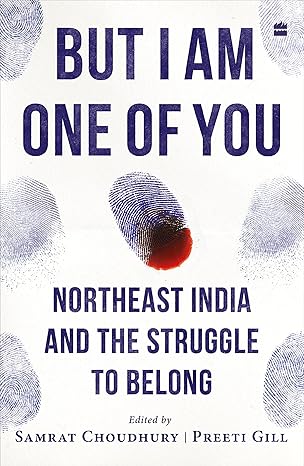"But I Am One of You Northeast India and the Struggle to Belong"
Samrat Choudhury a.k.a. Samrat X is an author and commissioning editor, and a former editor of daily newspapers in India's major metropolises, Delhi, Mumbai and Bengaluru. His latest book is Northeast India: A Political History, published by HarperCollins in India and Hurst in the UK. Some of his essays and short stories have appeared in translation in German, Spanish, Italian and Portuguese. His earlier works include The Braided River, a travelogue following the Brahmaputra, and The Urban Jungle, a novel. He was one of the two editors of Insider/Outsider, an anthology on that issue in Northeast India. His other interests include the Partition of India. Samrat was the Asian Leadership fellow from India at the International House of Japan in Tokyo in 2018 and a Chevening scholar at the University of Westminster, London, in 2019. Preeti Gill is an independent literary agent who has more than twenty years' experience in the publishing industry as a commissioning editor and rights director. She has travelled extensively in Northeast India and written on issues of conflict and women. She is the editor of The Peripheral Centre: Voices from India's Northeast and Bearing Witness: A Report on the Impact of Conflict on Women in Nagaland and Assam. Her writings have appeared in numerous journals and anthologies, including 1984 in Memory and Imagination (2016). Her documentary, Rambuai: Mizoram's ‘Trouble' Years (co-produced with Sanjoy Hazarika), was released in September 2016. She has edited She Stoops to Kill, an anthology of murder stories by women and co-edited Insider/ Outsider: Belonging and Unbelonging in India's Northeast, both published in 2019. ... Read more Read less
The ideas of who belongs and who does not, who is an insider and who is an outsider have sparked severe friction in Northeast India for decades now. From the frequent characterization of Bengal-origin Muslims in Assam as illegal Bangladeshi immigrants to the ethnic battles between the Meiteis and Kuki-Zo tribals of Manipur, from the Naga and Mizo separatist insurgencies to the prejudice the tribal minorities face in the mainland–negotiating identity has always been a complex issue. In recent years the National Register of Citizens and the Citizenship Amendment Act have added to that complexity.
Amidst sweeping political and social changes in the Northeast and the rest of the country, have things changed for the ‘Northeasterner’? How do the tribals and the old settlers find a way to coexist in the region?
This anthology addresses these pressing questions by bringing together a variety of voices from different communities across the Northeast. Each essay offers a unique perspective, reflecting the distinctive micro-history of diverse groups and the multiplicity of stories within every state. Timely and perceptive, But I Am One of You sheds light on the complex fabric of identity in Northeast India.
... Read more Read less










